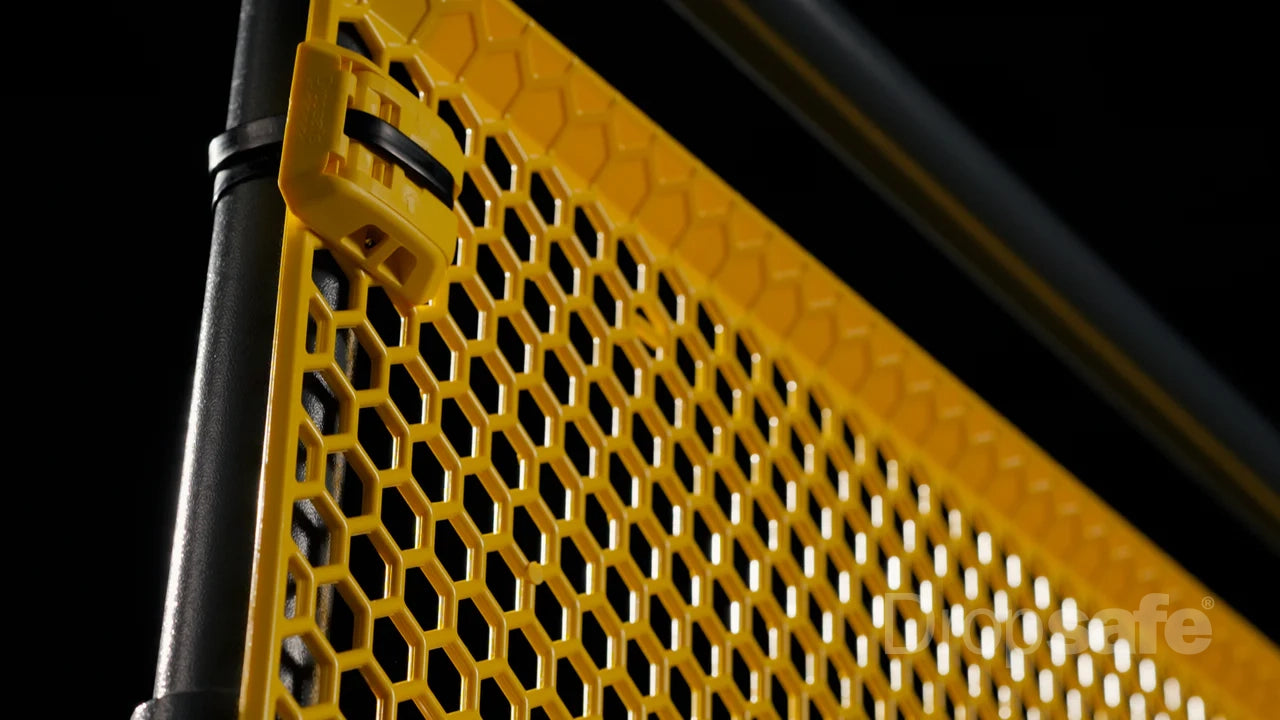Dropped objects pose a significant threat in many industries, including offshore energy, power generation, mining, and renewables. A dropped object is any item that falls from a height and can cause injury, damage, or loss of life. The fourfold threat of dropped objects is a combination of equipment integrity, personnel safety, corporate reputation, and financial losses.

Equipment Integrity
Dropped objects can cause significant damage to equipment and infrastructure, leading to detrimental downtime and high repair costs. In industries such as offshore energy and power generation, dropped objects can cause catastrophic damage to sensitive equipment, resulting in costly repairs and extended periods of downtime. Dropped tools or materials can also damage structures, leading to delays and added expenses.
To prevent dropped objects and protect equipment integrity, companies must implement effective primary and secondary securing systems. Primary securing systems such as lanyards or tool tethers can prevent tools or equipment from falling in the first place. Secondary securing systems such as nets or barriers provide an additional layer of protection in case of primary securing failure.
Personnel Safety
Dropped objects pose a significant risk to personnel working at height or in areas where objects are being lifted or moved. A dropped tool or piece of equipment can cause serious injury or, in the worst case, a fatality. Regularly required to work at height or in confined spaces, workers are often exposed to the potential or accidents, which in turn means more comprehensive levels of safety need to be in place.
To prevent dropped objects and protect personnel safety, companies must provide adequate training and equipment. Workers must be trained in the proper use of primary and secondary securing systems and provided with appropriate personal protective equipment (PPE) such as hard hats and safety glasses. Toolbox talks are also a good way to ensure that all personnel are informed about potential dangerous situations, enabling them to be avoided.
Corporate Reputation
Dropped object incidents can also very quickly and easily damage a company’s reputation. A dropped object occurrence can result in negative publicity, loss of customer confidence, and potential legal action. In today’s digital age, news of an incident can spread quickly, leading to long-term reputational damage.
To prevent dropped objects and protect corporate reputation, companies must implement effective safety programs and communicate their commitment to safety to employees, customers, and the public. Companies must also conduct regular safety audits to identify areas for improvement and ensure compliance with industry regulations.
Financial Losses
Dropped objects can result in significant financial losses no matter their outcome. In addition to repair costs and downtime, dropped objects can lead to legal action and fines as well as compensation and loss of business. In industries such as offshore energy and power generation, a dropped object can also result in environmental damage, leading to costly cleanup efforts and legal consequences.
To prevent dropped objects and minimise financial losses, companies must invest in effective primary and secondary securing systems and provide adequate training and equipment to workers. Companies must also conduct regular risk assessments to identify potential hazards and implement corrective measures.
Conclusion
Dropped objects pose a fourfold threat to companies: equipment integrity, personnel safety, corporate reputation, and financial losses. By prioritising safety and investing in effective prevention measures, companies can protect their employees, equipment, and reputation while minimising the financial impact of dropped object incidents.
